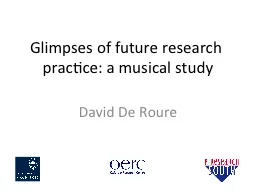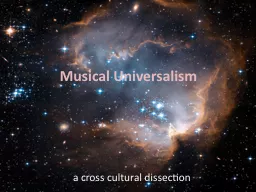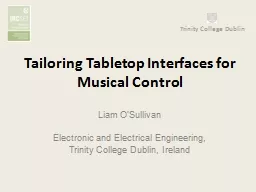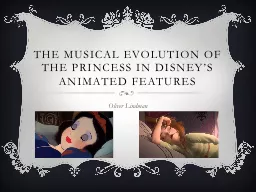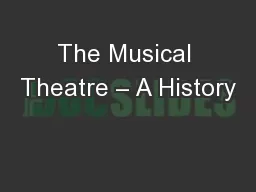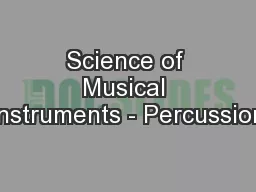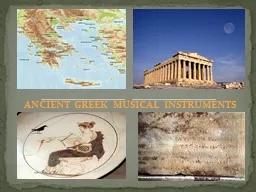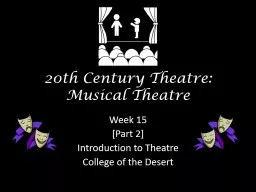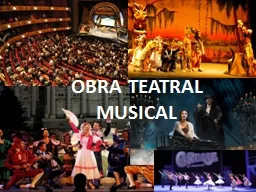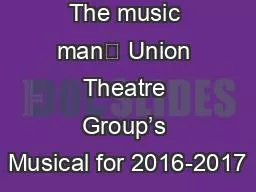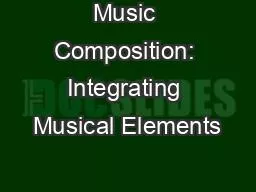PPT-Glimpses of future research practice: a musical study
Author : kittie-lecroy | Published Date : 2016-04-27
David De Roure Overview Generation 1 Early adopters Generation 2 Embedding Generation 3 Radical sharing Music case study 10 years ago we saw a few early adopters
Presentation Embed Code
Download Presentation
Download Presentation The PPT/PDF document "Glimpses of future research practice: a ..." is the property of its rightful owner. Permission is granted to download and print the materials on this website for personal, non-commercial use only, and to display it on your personal computer provided you do not modify the materials and that you retain all copyright notices contained in the materials. By downloading content from our website, you accept the terms of this agreement.
Glimpses of future research practice: a musical study: Transcript
Download Rules Of Document
"Glimpses of future research practice: a musical study"The content belongs to its owner. You may download and print it for personal use, without modification, and keep all copyright notices. By downloading, you agree to these terms.
Related Documents

